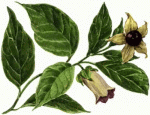Botany
|
16 may 2015 01:15:33 |
| Enhanced somatic embryogenesis in Theobroma cacao using the homologous BABYBOOM transcription factor (BMC Plant Biology) |
|
Tweet Background:
Theobroma cacao, the chocolate tree, is an important economic crop in East Africa, South East Asia, and South and Central America. Propagation of elite varieties has been achieved through somatic embryogenesis (SE) but low efficiencies and genotype dependence still presents a significant limitation for its propagation at commercial scales. Manipulation of transcription factors has been used to enhance the formation of SEs in several other plant species. This work describes the use of the transcription factor Babyboom (BBM) to promote the transition of somatic cacao cells from the vegetative to embryonic state.
Results:
An ortholog of the Arabidopsis thaliana BBM gene (AtBBM) was characterized in T. cacao (TcBBM). TcBBM expression was observed throughout embryo development and was expressed at higher levels during SE as compared to zygotic embryogenesis (ZE). TcBBM overexpression in A. thaliana and T. cacao led to phenotypes associated with SE that did not require exogenous hormones. While transient ectopic expression of TcBBM provided only moderate enhancements in embryogenic potential, constitutive overexpression dramatically increased SE proliferation but also appeared to inhibit subsequent development.
Conclusion:
Our work provides validation that TcBBM is an ortholog to AtBBM and has a specific role in both somatic and zygotic embryogenesis. Furthermore, our studies revealed that TcBBM transcript levels could serve as a biomarker for embryogenesis in cacao tissue. Results from transient expression of TcBBM provide confirmation that transcription factors can be used to enhance SE without compromising plant development and avoiding GMO plant production. This strategy could compliment a hormone-based method of reprogramming somatic cells and lead to more precise manipulation of SE at the regulatory level of transcription factors. The technology would benefit the propagation of elite varieties with low regeneration potential as well as the production of transgenic plants, which similarly requires somatic cell reprogramming. |
| 85 viewsCategory: Botany |
 Dissection of the style’s response to pollination using transcriptome profiling in self-compatible (Solanum pimpinellifolium) and self-incompatible (Solanum chilense) tomato species (BMC Plant Biology) Dissection of the style’s response to pollination using transcriptome profiling in self-compatible (Solanum pimpinellifolium) and self-incompatible (Solanum chilense) tomato species (BMC Plant Biology)Identification and analysis of novel salt responsive candidate gene based SSRs (cgSSRs) from rice (Oryza sativa L.) (BMC Plant Biology) 
|
| blog comments powered by Disqus |
MyJournals.org
The latest issues of all your favorite science journals on one page
The latest issues of all your favorite science journals on one page



